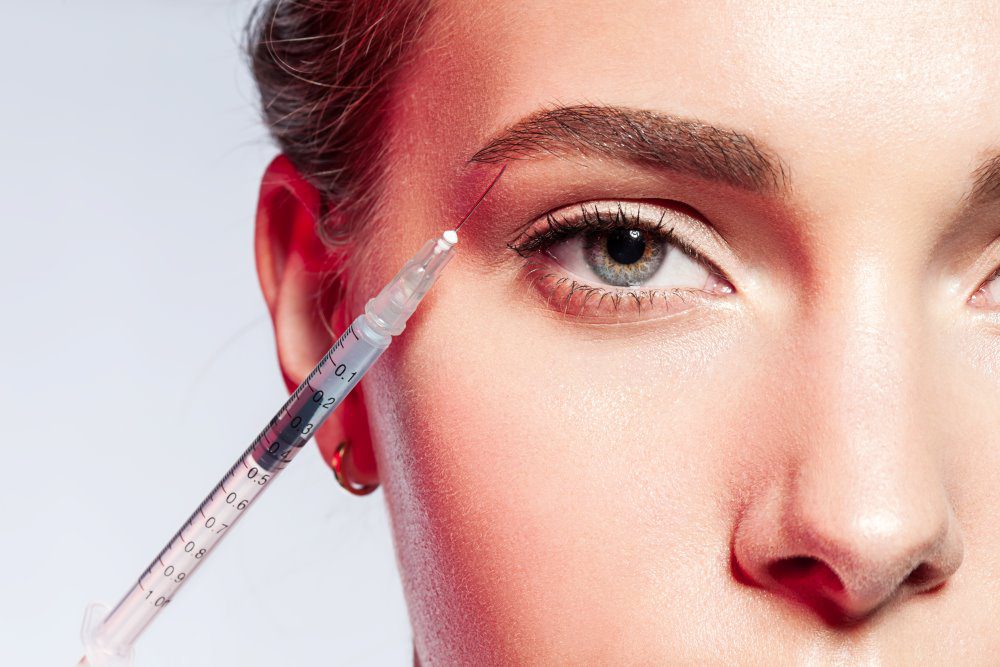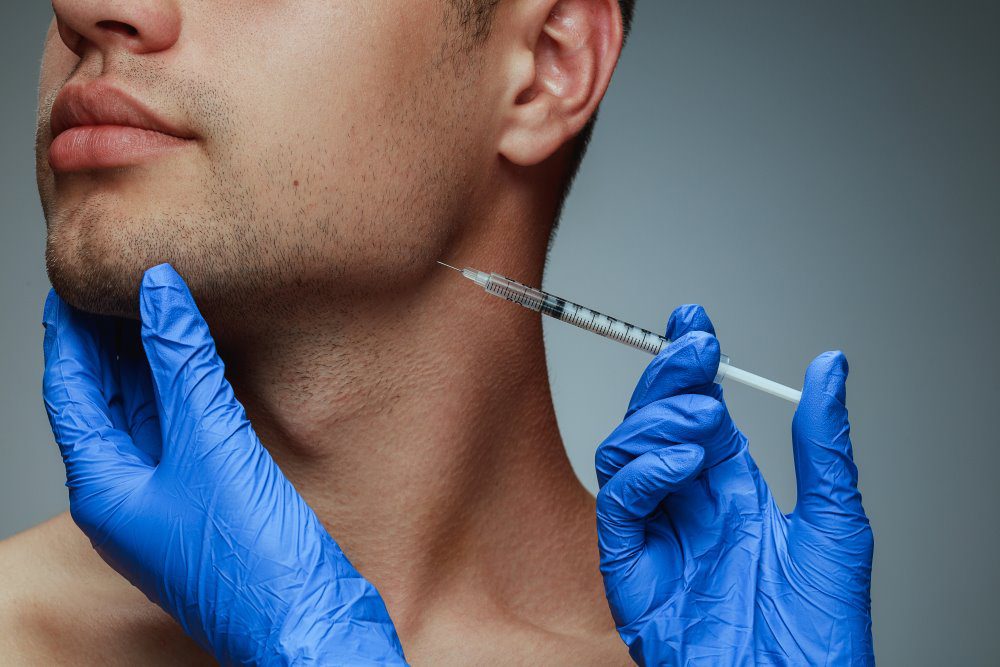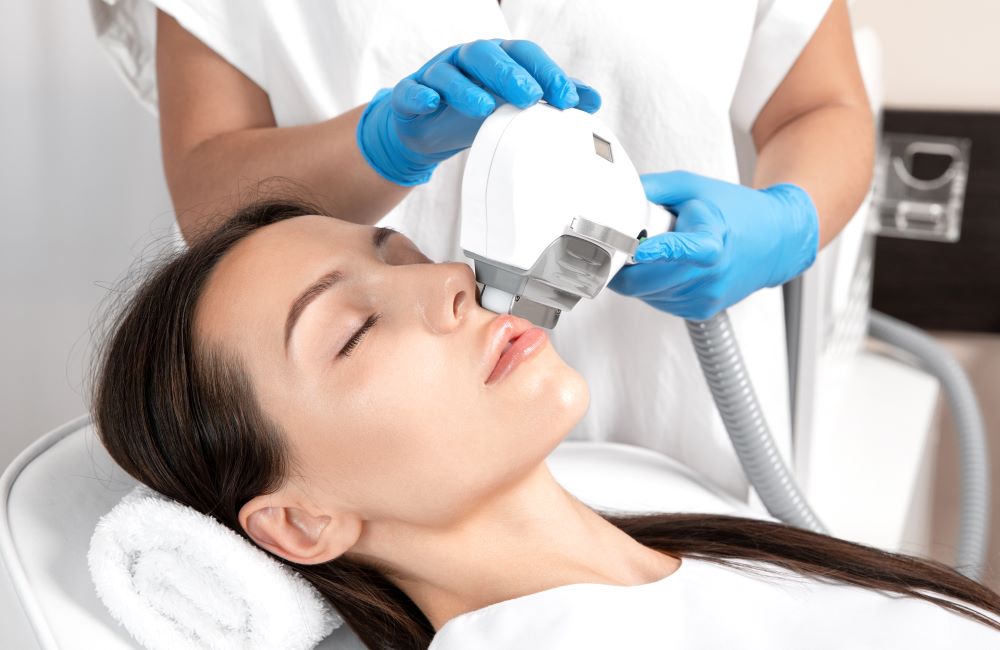From its humble beginnings in treating strabismus and other ocular disorders, Botox has greatly expanded its therapeutic range to address a wide variety of other medical conditions. Today, it is widely employed in the management of various neurological disorders, including chronic migraines, cervical dystonia, and spasticity. Its ability to selectively paralyze muscles relieves patients burdened by debilitating symptoms, underscoring its indispensable role in modern healthcare.
We’ll discuss the latest FDA-approved on-label uses of Botox, the emerging trends and potential future of Botox use, and the currently explored off-label uses. We’ll report on the future of the Botox market and discuss where manufacturers and researchers believe Botox may be used in the future.
Current On-Label Uses of Botulinum Toxin
Botox, or botulinum toxin, has gained regulatory approval for various medical and cosmetic indications, each harnessing its unique mechanism of action to provide therapeutic relief and aesthetic enhancements. The following outlines FDA-approved uses of Botox:
Chronic Migraines
Chronic migraines, characterized by debilitating headaches occurring more than 50% of the time, represent a significant problem for affected individuals. Botox injections have emerged as a preventive treatment option, effectively reducing the frequency and severity of migraine attacks. By targeting specific sites in the head and neck muscles involved in migraine pathology, Botox disrupts the transmission of pain signals, offering relief.
Cervical Dystonia
Cervical dystonia, also known as spasmodic torticollis, manifests itself as involuntary contractions of neck muscles. This can result in abnormal head postures and chronic neck pain. Botox therapy plays a pivotal role in managing this neurological disorder by inducing localized muscle relaxation. Botox can help alleviate pain, correct head positioning, and restore functional mobility by selectively inhibiting muscle contractions in the affected neck muscles.
Spasticity
Spasticity, a common complication of neurological conditions such as stroke, multiple sclerosis, and cerebral palsy, refers to the excessive and involuntary contraction of muscles, leading to stiffness, pain, and impaired movement. Botox injections offer a targeted approach to managing spasticity by blocking the release of acetylcholine at the neuromuscular junction, thereby reducing muscle hyperactivity and promoting relaxation. This therapeutic intervention enhances limb mobility, reduces discomfort, and allows the resumption of normal activity.
Excessive Sweating (Hyperhidrosis)
Hyperhidrosis, characterized by excessive sweating beyond what is necessary for temperature regulation, can significantly impact an individual’s social and emotional well-being. Botox treatment for hyperhidrosis involves the intra-dermal injection of the neurotoxin into the affected sweat glands, which inhibits the release of acetylcholine from the nerve endings that stimulate sweat production.
Many practitioners have used Botox to reduce sweating in the underarms, palms, and soles of the feet, as well as the scalp, forehead, face, and groin area.
Cosmetic Improvements
Botox has revolutionized the field of aesthetic medicine, earning widespread acclaim for its ability to diminish facial wrinkles and rejuvenate aging skin. Commonly targeted areas for cosmetic Botox injections include the forehead (to smooth horizontal lines), glabella (to soften vertical frown lines between the eyebrows), and lateral canthal lines (crow’s feet). By temporarily paralyzing facial muscles responsible for wrinkle formation, Botox can enhance overall facial aesthetics and contribute to a rejuvenated appearance, boosting self-confidence.
Blepharospasm
Blepharospasm, characterized by involuntary eyelid spasms and excessive blinking, poses significant challenges to visual function and quality of life. Botox injections into the affected periocular muscles offer a targeted therapeutic approach to managing blepharospasm by inducing localized muscle paralysis. By inhibiting abnormal muscle contractions, Botox helps alleviate eyelid spasms, reduces ocular irritation, and improves visual comfort.
Strabismus
Strabismus, commonly known as crossed eyes or squint, refers to the misalignment of the eyes, impairing binocular vision and depth perception. Botox therapy represents a valuable treatment modality for certain types of strabismus, particularly those involving extraocular muscles with overactivity or contracture. By selectively weakening or paralyzing specific eye muscles responsible for the misalignment, Botox helps restore ocular alignment, improves visual alignment, and promotes binocular vision.
Latest Off-Label Uses
Off-label uses of medications explore innovative avenues beyond their originally intended purposes. In the case of Botox, its off-label applications have garnered significant attention for their potential to address a diverse array of medical conditions. These off-label uses extend beyond the FDA-approved indications and are driven by continuing research, clinical observations, and patient experiences. These new trends are summarized below.
Proactive Anti-Aging
The growing interest in preventive skincare has extended the use of Botox beyond cosmetic wrinkle reduction to see its use as a proactive therapy. Younger patients are starting to see early use of Botox as a way to prevent the development of dynamic wrinkles later in life, allowing them to maintain their youthful appearance into middle age and beyond.
Treating Depression
Botox has shown promise in alleviating symptoms of depression by targeting facial muscles involved in expressing emotions. Research suggests that inhibiting the ability to frown with Botox injections may disrupt the feedback loop associated with negative emotions. Botox may modulate mood and improve overall well-being by reducing facial expressions associated with sadness or distress.
Neuropathic Pain and Migraines
Botox is being explored as a treatment for various types of chronic pain, including neuropathy-related pain. By inhibiting the release of neurotransmitters involved in pain signaling, Botox may provide relief for individuals who do not respond to conventional pain management strategies. Studies have shown promising results in reducing the frequency and severity of neuropathic pain, although more research is needed.
Premature Ejaculation
Some studies have investigated the use of Botox injections to treat premature ejaculation by targeting the muscles involved in ejaculatory control. By temporarily paralyzing specific muscles in the pelvic region, Botox may delay ejaculation and prolong sexual activity.
Bruxism (Teeth Grinding)
Botox injections have been explored as a potential treatment for bruxism, a condition characterized by involuntary teeth grinding and jaw clenching. By relaxing the muscles responsible for jaw movement, Botox may reduce the intensity and frequency of bruxism episodes and alleviate associated jaw pain, headaches, and tooth wear.
Scar Reduction
Botox could potentially reduce scar tissue by relaxing the surrounding muscles to decrease skin tension during the healing process. This may lead to finer, less noticeable scars. This concept is based on Botox’s capacity to inhibit muscle contractions, potentially influencing the skin’s healing environment and the formation of the fibrotic tissue that constitutes scars.
Future Trends in Clinical Research
Current trends in clinical research expand on current off-label uses while also exploring several other emerging areas that can be expected to yield significant benefits and expand Botox’s therapeutic potential.
Of course, determining the future trends that future research will follow is speculative, and significant clinical research, clinical trials, and careful analysis will be required before any of these uses can be officially sanctioned.
Development and Use of New Botox Formulations
Further research may result in the development of additional botulinum toxin-derived formulations, perhaps in combination with other ingredients. These may extend the lifetime of therapeutic benefits, improve precision, and facilitate their application to treat other conditions.
Beyond refining injection techniques, technology-driven advancements extend to developing innovative Botox formulations catering to diverse patient needs and therapeutic indications. Long-acting formulations designed to prolong therapeutic effects and reduce treatment frequency are poised to revolutionize the management of chronic conditions, such as spasticity and chronic migraines. Moreover, the encapsulation of Botox within biocompatible carriers and targeted delivery systems can enhance tissue penetration and minimize systemic exposure, thereby optimizing therapeutic efficacy and safety.
Technological Improvements in the Delivery of Injectables
Research into improved injection techniques can be expected to use technological innovations that improve the placement accuracy of injections, use of automated injection systems to optimize dosage, and micro-needling systems that allow precise targeting of specific muscle groups. These improvements should further minimize any undesired effects while optimizing the therapeutic benefits.
The use of artificial intelligence and robotic systems is promising to revolutionize injection techniques by using real-time feedback and adaptive control mechanisms to guarantee optimal placement and dosage. It’s also possible that using ultrasound to guide Botox injections will enable greater precision in some circumstances.
Combination Therapies
While Botox is often used with various dermal fillers, future use may expand its synergistic use alongside other non-invasive cosmetic procedures, including laser treatments or skin tightening procedures. These combined treatments can regenerate the skin, enhance results, and allow for more comprehensive and natural facial rejuvenation.
Potential Neurological Disorder Treatments
Botox research is likely to focus on expanding its therapeutic applications for neurological disorders beyond its current indications. Conditions such as cerebral palsy, stroke-related spasticity, and Parkinson’s disease may benefit from Botox injections to alleviate muscle stiffness, involuntary movements, and associated symptoms.
Mental Health and Psychiatric Disorder Trends
There is growing interest in exploring the potential role of Botox in managing psychiatric disorders, particularly mood and anxiety disorders. Preliminary studies suggest that Botox injections targeting facial muscles involved in emotional expression may modulate neural circuits implicated in mood regulation. Research may investigate the use of Botox to help conditions such as major depressive disorder, generalized anxiety disorder, and post-traumatic stress disorder.
Chronic Pain Management Treatments
Botox research may further explore its efficacy in managing chronic pain conditions, including neuropathic pain, fibromyalgia, and temporomandibular joint disorders. Botox injections may offer analgesic effects and improve pain-related functional impairment by targeting peripheral and central pain sensitization mechanisms.
Aging-Related Condition Treatments
Botox research will likely continue exploring its role in addressing aging-related conditions beyond cosmetic applications. Potential areas of interest include age-related muscle weakness, degenerative joint diseases, and cognitive decline. By targeting age-related changes in musculoskeletal function, Botox may mitigate functional decline, improve mobility, and enhance overall quality of life in older adults. Additionally, research may investigate the neuroprotective effects of Botox in age-related neurodegenerative diseases such as Alzheimer’s and Parkinson’s diseases.
Scar Management
Botox research may delve into its potential applications in scar management, including hypertrophic scars, keloids, and surgical scars. By relaxing surrounding muscles and decreasing skin tension during the healing process, the amount of resulting scar tissue might be reduced, and appearance, skin texture, and flexibility might be improved. Studies may explore the optimal timing, dosage, and injection techniques for scar reduction, as well as the potential benefits of combining Botox with other scar treatment modalities, such as laser therapy and topical agents.
Emerging Anti-Inflammatory Properties
Additionally, its anti-inflammatory properties are being investigated for use in treating conditions like psoriasis and other inflammatory skin diseases.
Research suggests that Botox may indirectly attenuate inflammation by reducing muscle activity and mechanical stress on tissues. By inhibiting muscle contractions, Botox may alleviate tension and strain in the affected area, which contribute to inflammation and tissue damage.
Gastrointestinal Disorders
Botox research may investigate its therapeutic potential in gastrointestinal disorders characterized by dysmotility, sphincter dysfunction, and visceral pain. Conditions such as achalasia, anal fissures, and irritable bowel syndrome may benefit from Botox injections to relax smooth muscle tone, inhibit sphincter spasms, and relieve visceral hypersensitivity.
Urological Disorders
Botox research may explore its utility in managing urological disorders such as overactive bladder, urinary incontinence, and pelvic floor dysfunction. By inhibiting detrusor muscle contractions and modulating bladder sensory pathways, Botox injections may improve bladder function, urinary urgency, and continence control.
Ophthalmic Disorders
Botox research may continue to advance its applications in ophthalmic disorders such as blepharospasm, strabismus, and dry eye syndrome. By selectively targeting extraocular muscles and lacrimal glands, Botox injections may reduce involuntary eye movements, correct ocular misalignment, and enhance tear production and stability.
Cancer-Related Complications
Botox research may explore its potential role in managing cancer-related complications, including pain, muscle spasms, and treatment-related side effects. Conditions such as radiation-induced fibrosis, chemotherapy-induced peripheral neuropathy, and cancer-related facial asymmetry may benefit from Botox injections to alleviate symptoms and improve functional outcomes.
Social and Ethical Implications
The increased general acceptance of Botox use is raising ethical concerns about body image and the pursuit of perfection through cosmetic enhancement. There’s a very real chance that some consumers develop unrealistic expectations and over-use cosmetic procedures, hoping to achieve unrealistic goals. Using Google to search for “unnatural Botox” will show some of the undesirable outcomes resulting from excessive use of Botox.
Increasing the use of injectable Botox and other cosmetic procedures by younger patients involves additional considerations, including reinforcing ideas of body dissatisfaction at a vulnerable age, as well as the possible consequences of reliance on Botox over very long periods. This trend is increasing. Choosing the appropriate age to initiate cosmetic intervention is an area of wide divergence of views.
Providers bear the ethical responsibility to keep their training up-to-date and counsel potential patients to be fully aware of the long-term risks and benefits of using any cosmetic procedure. While they obviously have a financial incentive to perform procedures, they also have the responsibility to fully educate patients, discuss viable alternative treatments, and set boundaries beyond which they refuse to go. These should include refusing to perform unnecessary or unduly risky procedures and ensuring that patients have realistic and achievable expectations.
As cosmetic procedures become increasingly normalized in society and a growth market for such treatments continues to develop, profound social implications emerge. People’s perceptions of beauty, aging, and self-worth are changing, and the ubiquity of social media and celebrity culture amplifies societal pressures to conform to narrow beauty standards. These combine to fuel a demand for quick-fix solutions like Botox. However, this same accessibility and normalization of cosmetic interventions may result in the reinforcement of ageism and perpetuate inequalities, as access to treatments is a function of socioeconomic privilege.
Finally, it’s worth considering that the availability of cosmetic procedures reinforces the tendency of some to equate their self-worth with their external appearance. This has the potential to exacerbate psychological distress, diminish the overall quality of life, and create additional pressures as one inevitably ages. As in all things, moderation should be encouraged.
Discover the future of Botox with our expert laser skin care at Your Laser Skin Care. Explore personalized treatments for rejuvenation and enhancement! Contact us today!












